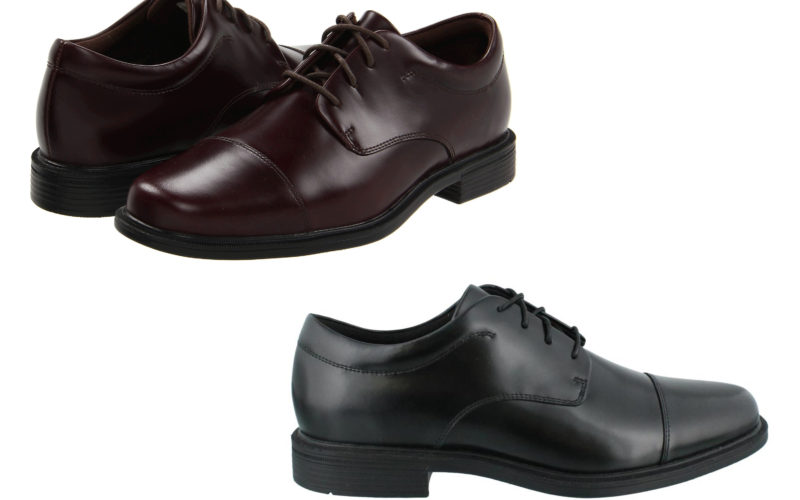Q. There is a lot more snow this winter than I have experienced for a while. I’m not comfortable putting on galoshes. Is there any kind of shoe that’s appropriate for business that will keep my ankles dry?
A. Women solve what to wear on their feet in wet/snowy weather by having two pairs of shoes. They wear one pair to get to work and carry one pair to change into. Men generally don’t seem willing to use this solution. As you described, you want one pair that will do double duty.
That means you have a few choices:
- Wear a pair of businesslike shoes to and at work, and protect them with some sort of outdoor shoe cover – the galoshes you mentioned or low rubber shoe covers – until you get to work;
- Wear shoes that are appropriate for work and skip any sort of protecting footwear; consider pre-treating your shoes;
- Just wear rugged, heavy-duty shoes all day long and ignore that you may look inappropriately dressed for an office;
While at times hidden behind a desk or in snow, a man’s shoe is an essential component of his professional look. I always list the key indicators of a man’s style and taste as, “his shoes, his watch, and his tie.” Even though shoes may not have the immediate impact of an expensive watch, they do project to the world a clear-cut impression about you. They should be the very best you can afford.
When a man wears nice leather shoes in bad weather, it does not make a lot of sense to refuse to protect them with galoshes. Getting your footwear drenched in the rain or snow is almost literally pouring your investment down the drain.
As for low rubber shoe covers, a good choice would be an item called Swims; they are not your Dad’s galoshes. These practical, well-designed shoe covers come in standard black as well as unexpected fun colors, such as their very popular bright orange They are rather pricey (around $100) and, thanks to their structure and slightly fuzzy lining, they are easy to slip on and off, much easier than most other low rubber overshoes.
One practical concern that men have is what to do with their galoshes or shoe covers once they arrive at work? It really is not complicated: just stash them in the same closet where raincoats and umbrellas go.
CARE:
- If you pretreat your best shoes with an upscale oil-based sole treatment, then when rain is light, you can still wear fine calf leather shoes. Apply it to the leather soles of dress shoes; it helps prevent water from permeating the shoe from the underside. Most shoe damage occurs as water wicks up through the sole, and ruins the leather.
- To pretreat/weatherproof the uppers on regular leather shoes, you might use easy-to-work-with sprays or leather creams. They may need to be refreshed a few times during the season.
- Having a backup pair of shoes is a smart idea. For those occasions when bad weather is not predicted or it changes unexpectedly, it’s wise to keep a spare pair of old (or your non-favorite) dress shoes permanently at work.
- If you do get caught wearing good shoes in bad weather, take the best step you can when you get home by inserting cedar shoe trees; then allow your shoes to dry slowly in your closet.
While true dress shoes don’t come above the ankle, you may want to check out some of the new upscale dress boots on the market, such as the latest Allen Edmonds Weatherproof Dress Boots; they feature waterproof leathers, Dainite rubber soles, and are seam-sealed to keep you dry. Even though these high-quality dress boots are not formal enough to wear with dressy, dark pinstriped suits that men no longer seem to be wearing, they are versatile enough to pair with most of the blazers, tweed sports jackets, and medium-dark suits in your closet. Depending upon what others in your office/field wear, these may fit right in . . . or stand out as stylish and appropriate.
Please send your men’s dress and grooming questions to MALE CALL: Lois.Fenton@prodigy.net









